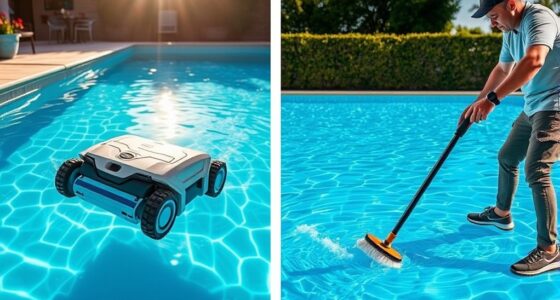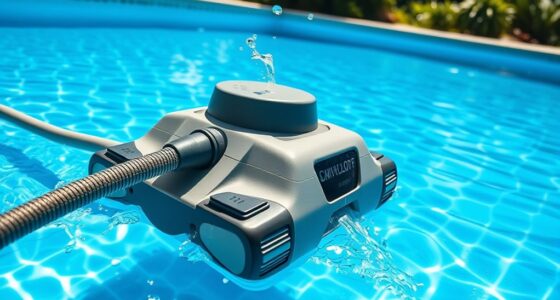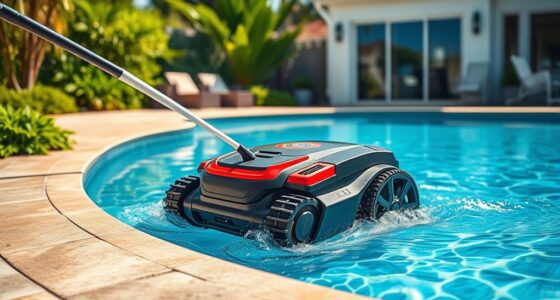Your washing machine’s true costs go beyond the purchase price. High water and energy bills, especially with older or inefficient models, can add markedly to your expenses. Plus, maintenance, repairs, and supply costs can quickly accumulate, impacting your budget. Labor involved in laundry tasks also adds up over time. If you want to uncover ways to cut these hidden costs and improve efficiency, keep exploring to learn more.
Key Takeaways
- Older washing machines use more water and energy, increasing utility bills and environmental impact.
- Frequent repairs and neglect shorten appliance lifespan, leading to higher replacement and maintenance costs.
- Hidden labor expenses from manual laundry tasks can add up to thousands annually.
- Improper installation and excessive detergent use cause leaks, clogs, and higher operational costs.
- Upgrading to energy-efficient, modern washers reduces long-term water, energy, and maintenance expenses.
The True Expense of Water and Electricity
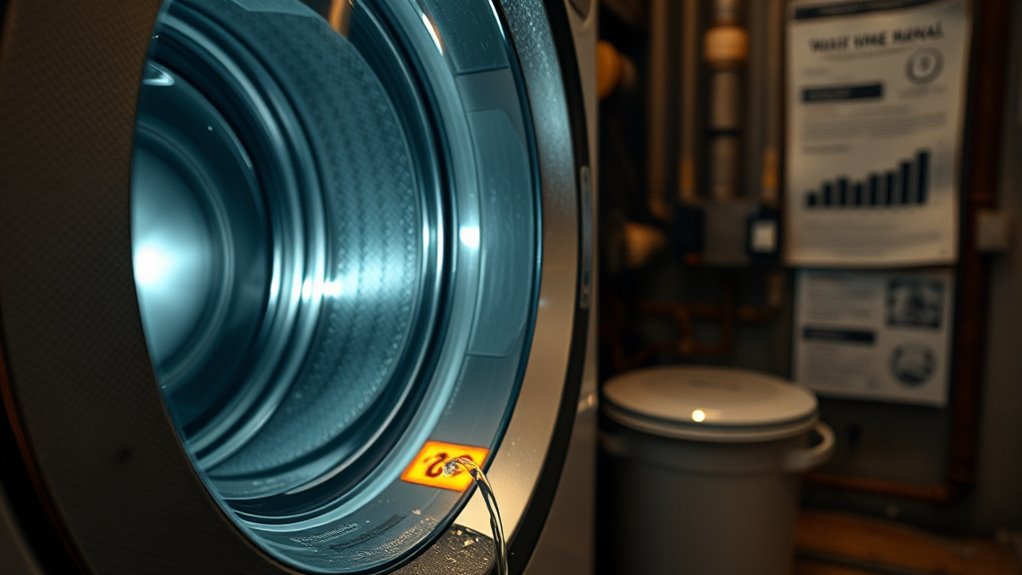
Have you ever wondered how much water and electricity your laundry actually costs? Your washer’s water usage plays a big role, especially if you use an older model that consumes up to 40 gallons per cycle. Commercial washers can use even more—between 20 and 50 gallons per load—adding to your water bills. Additionally, water conservation practices can significantly reduce your overall costs and environmental impact. Energy consumption also impacts your costs; dryer cycles alone can cost between $0.50 and $1.00 each, and running multiple loads daily can quickly add up. On average, monthly utility bills for water and electricity range from $350 to $900, which means annual costs can reach $10,800. Understanding these expenses helps you realize how water and energy consumption directly influence your laundry costs and overall budget. Additionally, Kia Tuning options like performance upgrades and ECU remapping can optimize engine efficiency, which may lead to reduced energy consumption in your vehicle. Being mindful of appliance efficiency can further help lower your utility bills over time. For example, selecting energy-efficient appliances can make a significant difference in reducing your overall utility costs and environmental footprint.
Hidden Costs of Equipment Maintenance and Repairs
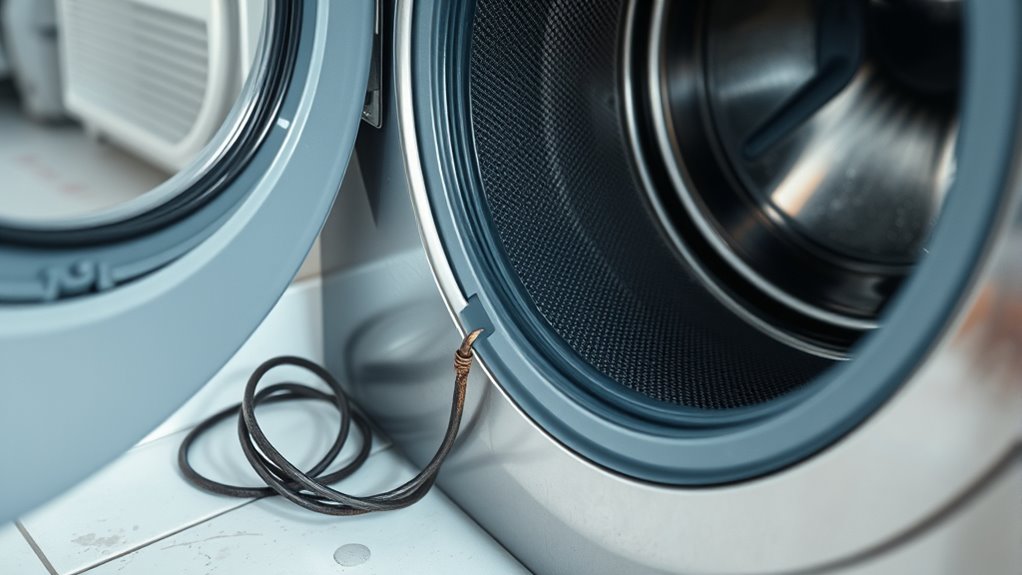
You might not realize how quickly maintenance and repair costs add up over time. Unexpected repairs can cost hundreds or even thousands, disrupting your schedule and budget. Replacing equipment every 7 to 10 years can also lead to significant expenses that often go unnoticed until it’s too late. Additionally, outdoor space design trends are evolving rapidly, which may influence your decision to upgrade or replace appliances to match your new aesthetic preferences. Recognizing the relationship between maintenance costs and equipment lifespan and understanding how energy efficiency improvements can extend the useful life of appliances can help you make more informed decisions about upgrades and repairs, especially as modern appliances increasingly focus on sustainable design principles.
Repair Expenses Accumulation
Repair expenses can quickly add up, especially when unexpected breakdowns happen. These repair expenses often stem from worn-out parts like motors, belts, or bearings, which cause your machine to work harder and increase the risk of breakdowns. Regular maintenance costs, ranging from $150 to $500 per visit, help prevent some issues, but unexpected repairs can still cost between $300 and $1,500 each. Over time, these costs accumulate, contributing notably to your long-term costs of ownership. Ignoring maintenance accelerates wear and tear, leading to more frequent repairs and higher expenses. In addition, neglecting preventive maintenance can decrease your appliance’s lifespan, resulting in even greater costs over time. Being proactive about scheduled checkups can help catch problems early and save money in the long run. Incorporating sound healing science principles into your routine may also promote overall well-being and reduce stress related to appliance issues. Regularly inspecting your washing machine’s hoses and components also helps prevent costly water leaks, which can cause extensive property damage. Implementing asset division strategies when replacing or repairing appliances can also help manage costs effectively over time.
Equipment Replacement Lifecycle
As repair and maintenance costs accumulate over time, they substantially influence the overall lifespan and total cost of owning a washing machine. Regular maintenance helps extend the lifespan, but wear and tear eventually lead to costly repairs or replacement. When repairs become frequent or expensive, it’s often more economical to replace the unit altogether. Equipment replacement costs can range from $5,000 to $15,000, depending on capacity and features, making them a significant investment. Neglecting timely repairs and maintenance shortens the machine’s effective lifespan and voids warranty coverage, increasing costs further. Additionally, understanding the self-watering plant pots system could serve as a useful analogy for maintaining your appliances efficiently. Proper maintenance schedules can help identify issues early and prevent costly failures, ensuring your washing machine remains functional longer. Incorporating data-driven strategies for tracking maintenance can optimize repair timing and costs. Ultimately, understanding the equipment lifecycle of your washing machine ensures you plan for replacement before costly failures occur, saving money and avoiding disruptions in your routine.
The Overlooked Impact of Labor on Laundry Expenses
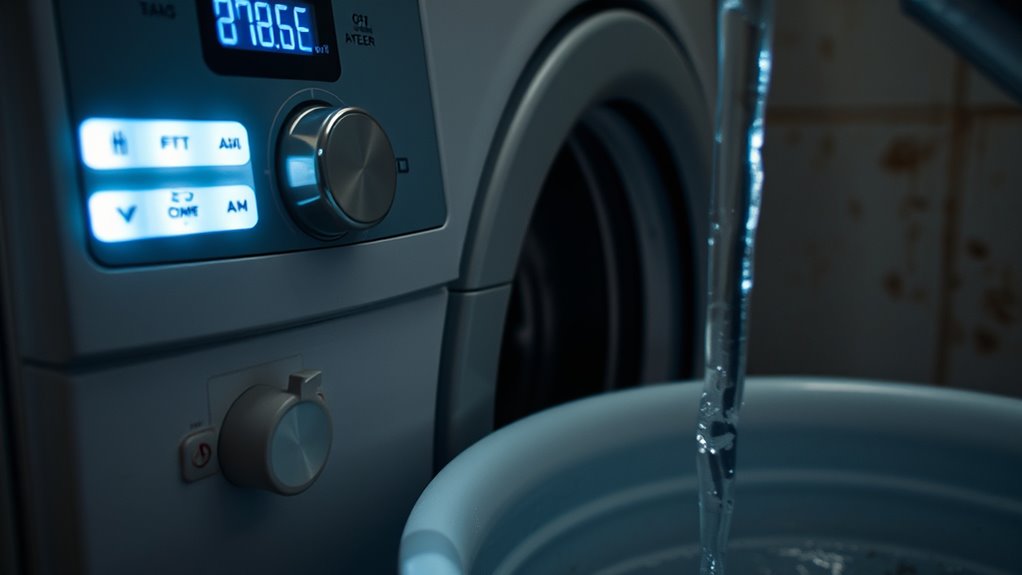
Labor costs often go unnoticed when evaluating laundry expenses, yet they can represent a significant portion of the overall budget. The time spent loading, unloading, folding, and sorting laundry adds up, impacting staff productivity and increasing operational costs. Typically, employees spend 10 minutes per load, totaling 2-5 hours daily for 5-10 loads, equating to around $60 daily or $1,800 monthly at $20/hour. Over a year, these hidden costs can reach $21,600, which many overlook when calculating expenses. This overlooked labor represents a major operational cost that affects your bottom line. Additionally, Pimple Patches are a prime example of targeted skincare solutions that can reduce the need for time-consuming treatments, saving even more on overall skincare routines. Outsourcing laundry tasks to specialized services like Drop & Dash allows staff to focus on core duties, saving money and boosting efficiency by reducing these hidden labor expenses. Implementing automated laundry solutions can further reduce labor costs and improve overall operational efficiency. Moreover, understanding the rustic charm of a farmhouse bedroom can inspire cost-effective decorating strategies that emphasize authenticity and simplicity, ultimately supporting efficient use of resources.
Ongoing Expenses for Detergents and Supplies
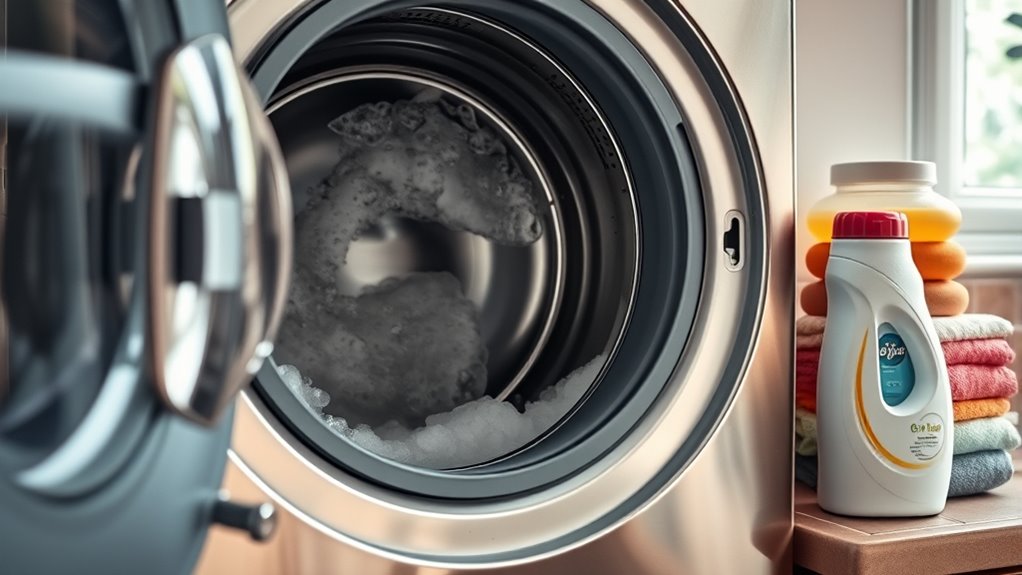
Ongoing expenses for detergents, softeners, and sanitizing agents can quickly add up, often ranging from $150 to $450 each month. These costs directly impact your operational expenses, especially if you frequently buy supplies like laundry bags and baskets, which can add $100 to $500 annually. Managing your supply intake carefully helps prevent unnecessary spending. Using too much detergent or improper types can cause residue buildup, making cleaning more difficult and increasing supply costs. To illustrate, consider this supply management table:
| Supply Type | Monthly Cost | Annual Cost |
|---|---|---|
| Detergent | $50 – $150 | $600 – $1,800 |
| Softener & Sanitizer | $30 – $100 | $360 – $1,200 |
| Laundry Supplies | $20 – $50 | $240 – $600 |
Staying mindful of these expenses helps control your laundry operational costs.
How Old and Inefficient Machines Drive Up Costs
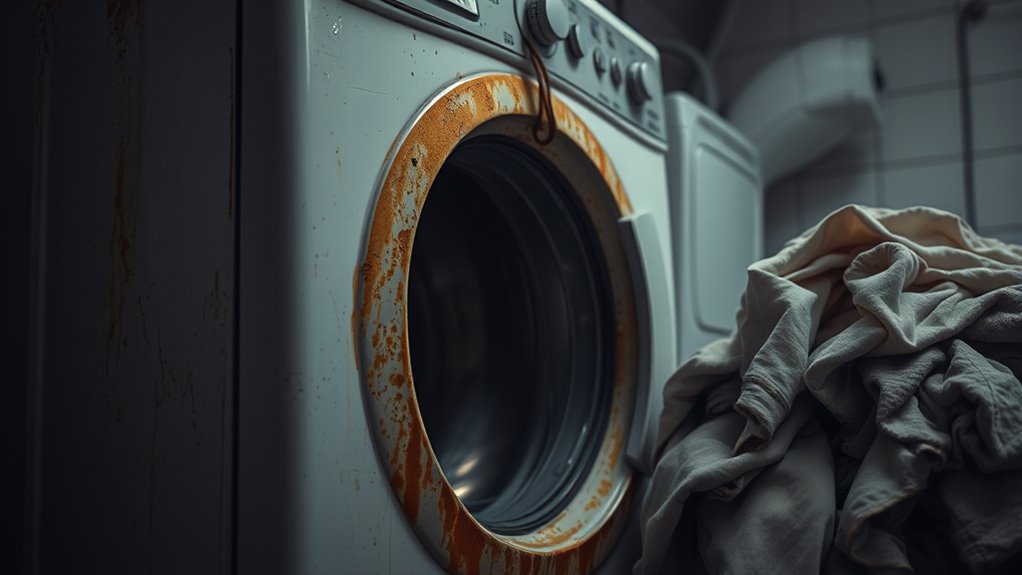
Old, inefficient washing machines use more water and energy, driving up your utility bills. Worn parts lead to longer cycles and costly repairs, while improper installation can cause additional damage. Upgrading can save you money by reducing these avoidable expenses.
Outdated Model Efficiency
Older washing machines can considerably increase your utility bills because they tend to use much more water and energy than modern models. Outdated models are far less energy-efficient, often consuming 30-50% more power, which hikes up electricity costs. They also use excessive water—up to 40 gallons per load—leading to higher water bills. Longer cycle times caused by worn components mean more energy and water waste, while inefficiencies from lack of load sensors can cause over- or underloading, wasting resources and reducing cleaning effectiveness. As these machines age, repair costs and maintenance needs rise, making them more expensive to keep running. Switching to a newer, energy-efficient model saves money on utilities and reduces ongoing repair and maintenance expenses, making your laundry routine more cost-effective.
Wear and Tear Impact
As washing machines age, their components wear out, causing them to consume more water and energy than necessary. Worn parts like motors, belts, or bearings make the machine work harder, reducing overall efficiency and increasing repair costs. Aging components are more prone to leaks and drainage problems, leading to water waste and potential damage. Over time, the wear on these parts accelerates, especially if the machine isn’t properly maintained. This increased wear and tear not only raises utility bills but also shortens the lifespan of your washer. The more your machine wears, the more frequent and costly repairs become. Upgrading to a newer, energy-efficient model is often the best way to minimize these costs and improve performance, avoiding the cycle of constant repair and inefficiency caused by aging components.
Improper Installation Effects
Improper installation can considerably increase your washing machine’s operating costs by causing it to work inefficiently. When machines aren’t level or have incorrect water pressure settings, leaks occur, wasting water and raising bills. Old or improperly installed units often vibrate excessively, leading to uneven wear and higher energy use. Worn parts in aging machines make them work harder, increasing maintenance needs. Drainage issues from poor installation extend cycle times, wasting water and electricity. To illustrate, here’s a quick overview:
| Issue | Cause | Effect |
|---|---|---|
| Leaks | Improper leveling & water pressure | Water wastage & higher bills |
| Excessive vibration | Uneven installation | Increased energy use |
| Wear & tear | Old parts & improper setup | Costly maintenance |
| Drainage problems | Faulty installation | Longer cycles & costs |
Proper installation prevents these costly issues and keeps your machine running efficiently.
Tips to Maximize Washing Machine Efficiency
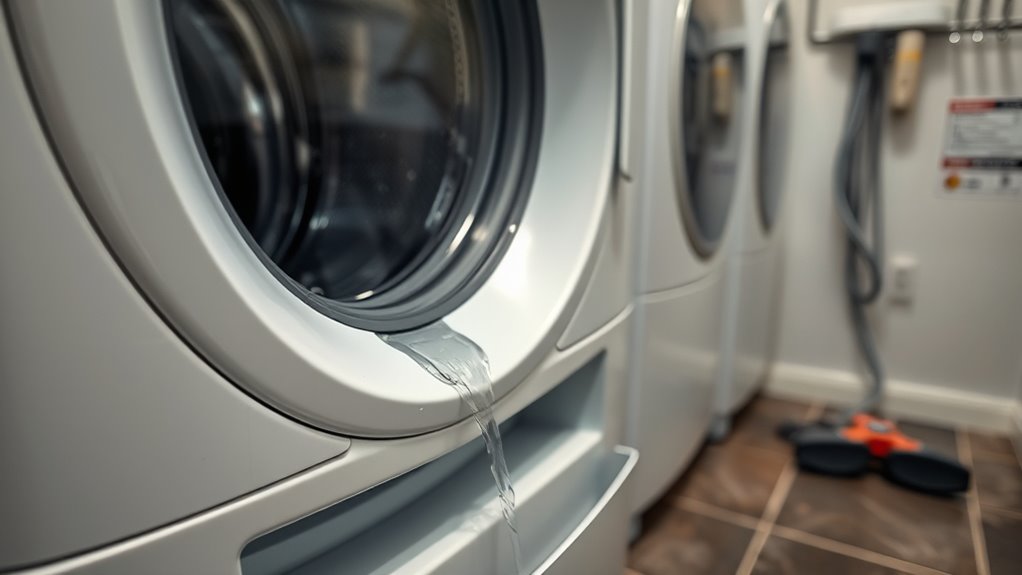
To maximize your washing machine’s efficiency, it’s important to use the right load sizes—aim for about 75-85% full—so you can enhance water and energy use during each cycle. Proper load size improves water efficiency and reduces unnecessary energy consumption. Choose eco-friendly or low-water cycles and opt for cold water settings whenever possible to further cut utility costs. Regular maintenance, like cleaning filters and hoses, prevents clogs and ensures ideal water drainage, avoiding extra cycle runs. Upgrading to modern models with ENERGY STAR ratings can provide advanced water and energy-saving features, boosting overall efficiency. By following these tips, you’ll extend your washing machine’s lifespan, lower utility bills, and reduce your environmental impact.
Smart Investments for Reducing Water and Energy Use
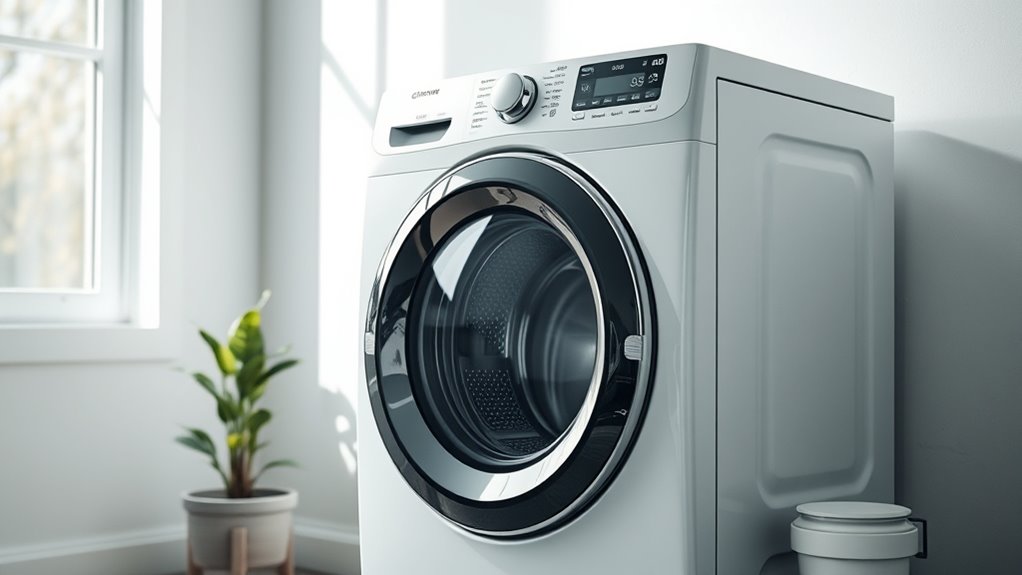
Investing in smart water management tools can substantially cut your water and energy bills by highlighting inefficiencies and preventing waste. Smart water meters like Bluebot Mini, costing around $199, enable real-time leak detection and usage monitoring without replacing appliances. Upgrading to high-efficiency washers, especially energy-efficient front-loaders, reduces water use by 40-60%, saving money and benefiting the environment. Regular washing machine maintenance and proper load management ensure peak efficiency and longevity. Combining these investments helps identify hidden leaks and inefficient cycles early, preventing costly repairs.
| Investment Type | Benefits | Cost Estimate |
|---|---|---|
| Smart water meters | Leak detection, usage monitoring | ~$199 |
| High-efficiency washers | Water and energy savings | Price varies |
| Washing machine maintenance | Improved efficiency, longevity | Low to moderate |
| Load management strategies | Reduced water and energy use | Free or minimal cost |
| Energy-efficient appliances | Long-term savings | Higher initial cost |
Frequently Asked Questions
How Much Does It Cost to Run a Washing Machine Water?
The cost to run your washing machine’s water depends on how much water it uses per load and your local water rates. On average, a load consumes about 20 to 40 gallons. If your water costs $4 per 1,000 gallons, each load costs roughly 8 to 16 cents. Using efficient models and eco-friendly cycles can lower your water bill, saving you money over time.
Is It Worth Getting a Washing Machine Serviced?
Getting your washing machine serviced is definitely worth it. Regular maintenance helps catch issues early, preventing costly repairs down the line. It also keeps your machine running efficiently, saving you water and energy, which lowers utility bills. Plus, a well-maintained machine lasts longer and works better, ensuring your laundry stays fresh and clean. Overall, investing in servicing saves you money and hassle in the long run.
How Much Does a Washing Machine Add to Your Water Bill?
Your washing machine can considerably impact your water bill, especially if it’s older or less efficient. On average, each load uses 12 to 40 gallons of water, and doing 10 loads weekly can add over 15,000 gallons annually. Upgrading to a high-efficiency model helps cut water use by up to 60%, saving you money in the long run. Properly loading and choosing eco-friendly cycles also help control costs.
What Is the Most Expensive Part on a Washer?
Did you know replacing a washing machine’s motor can cost between $200 and $600? The most expensive part on a washer is typically the motor, followed by the drum assembly, which can cost over $400. If the motor fails or the drum is severely damaged, you’ll face hefty repair bills. Understanding these costs helps you weigh whether to repair or replace your machine to save money in the long run.
Conclusion
Did you know that running an average washing machine can use up to 40 gallons of water per load? By understanding the hidden costs—water, energy, repairs, and supplies—you can make smarter choices. Investing in an efficient machine and maintaining it properly could save you hundreds annually. Take control of your laundry expenses today, and turn those hidden costs into savings. Every load you wash is an opportunity to be more mindful and economical.


